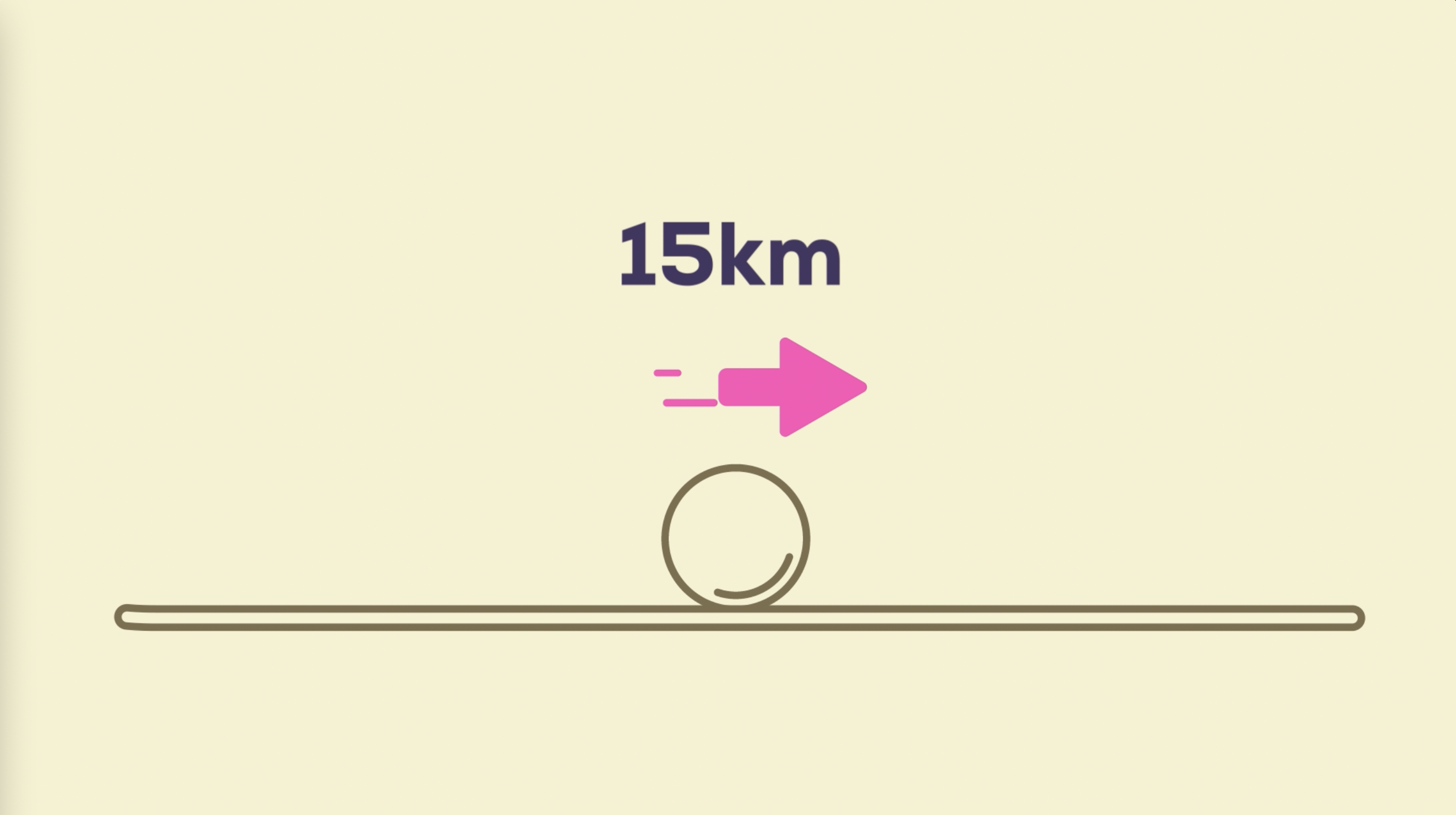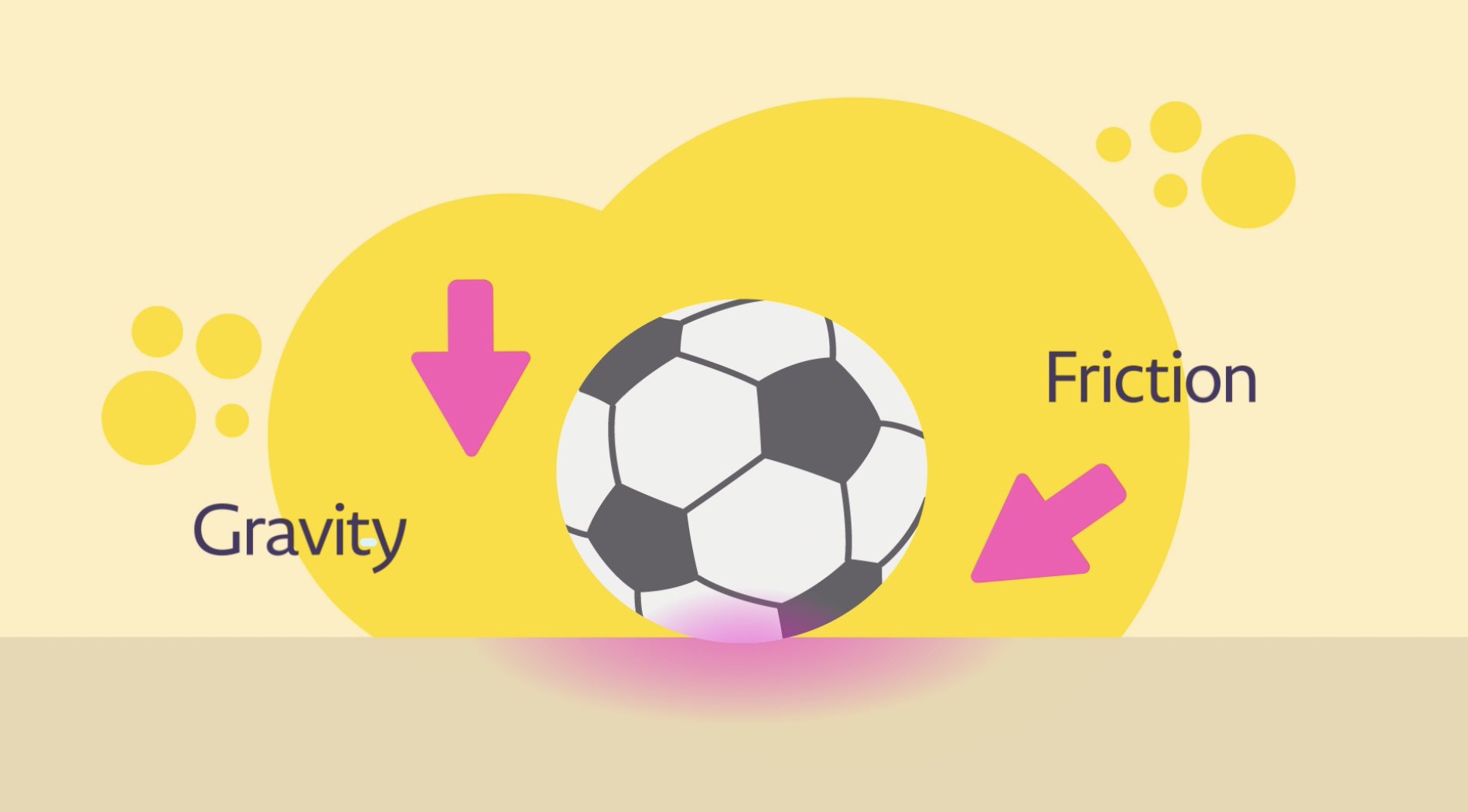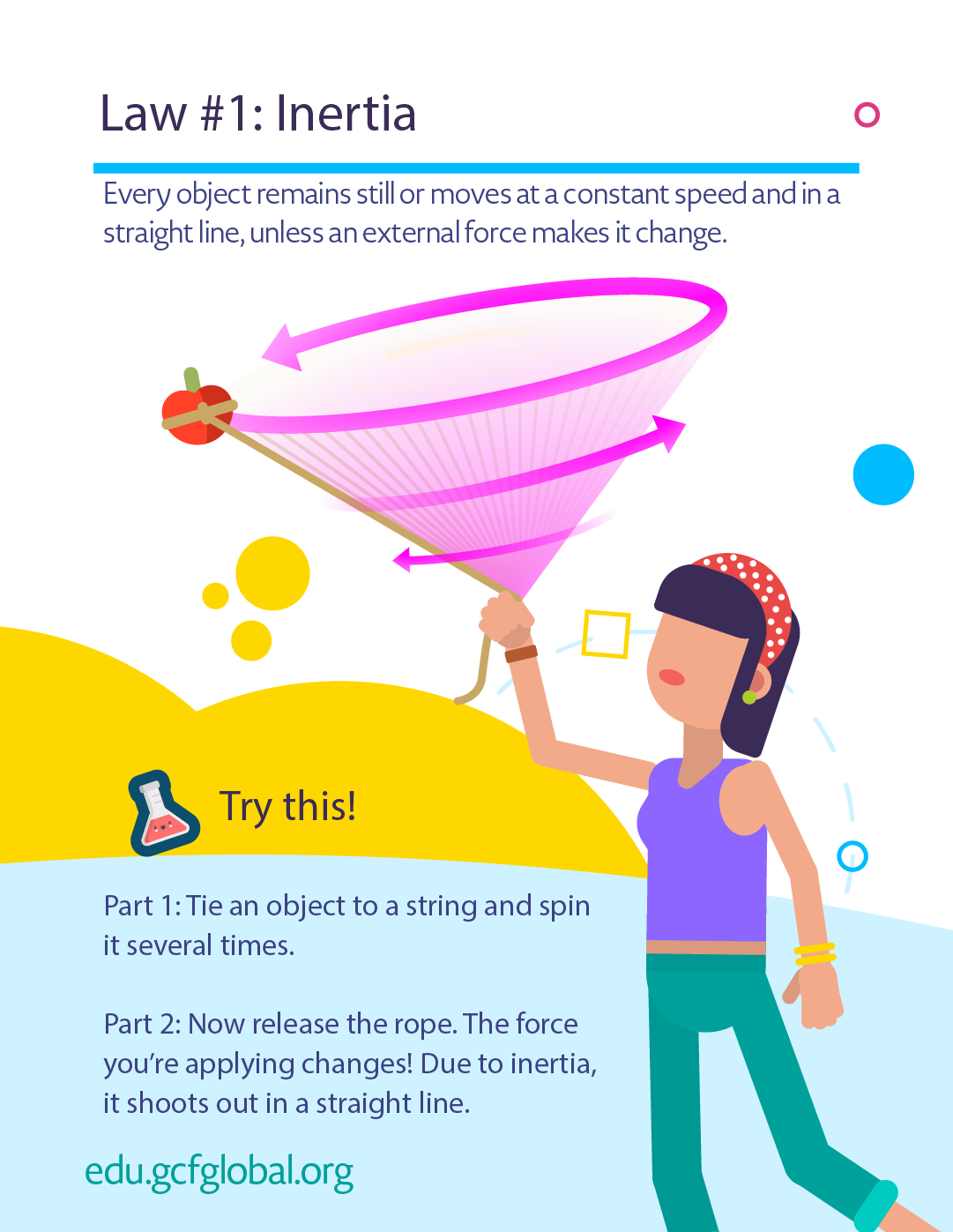Newton's Laws of Motion -
Newton's First Law

Newton's Laws of Motion
Newton's First Law


/en/newtons-laws-of-motion/motion-in-the-world-around-us/content/
Newton was reading the work of another scientist named Galileo, who also studied the motion of objects, and combined Galileo’s findings with his own ideas. This led him to come up with his first law of motion.
Newton confirmed that any object that’s still or in motion will remain that way–unless another force or object moves it, or makes it change position. Also, objects in motion move at a constant speed and in a straight line.

Let’s say you’re on a soccer field. The ground is still, of course, and the ball doesn’t move unless someone kicks it or picks it up.

When you kick the ball, you’re applying a force that changes its state: it goes from being still to being in motion.
According to Newton, the ball will continue to roll in a straight line. But we know that at some point, it does stop. This happens because your foot isn’t the only force. There are other forces at work, too:

Why do objects stay still?
An object remains motionless for two reasons: (1) there are no forces acting on it, or (2) if there are forces, they’re equal in strength.
The ball stays still when there’s no friction from the grass, or the force of your foot kicking it. Since it’s already on the ground, we don’t see gravity. But if it was in the air, gravity would pull it back toward the ground.
Remember: Objects move in a straight line unless some other force comes into play. When the ball gets kicked, the force of the foot is greater, causing motion.
Inertia is the tendency of an object to remain at rest or in a state of motion, unless acted on by a force. If no force interferes with it, then it will move in a straight line and at a constant speed.

In the next lesson, we’ll explore Newton’s second law of motion…
/en/newtons-laws-of-motion/newtons-second-law/content/